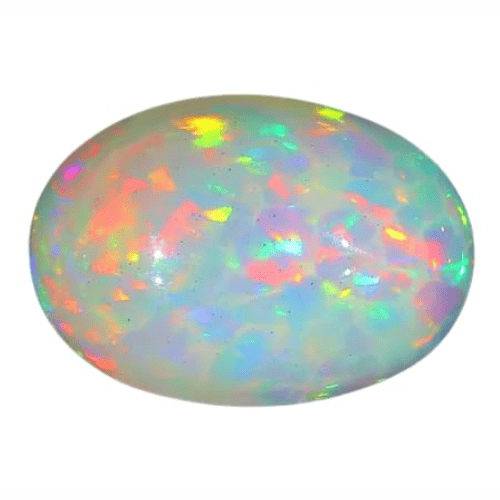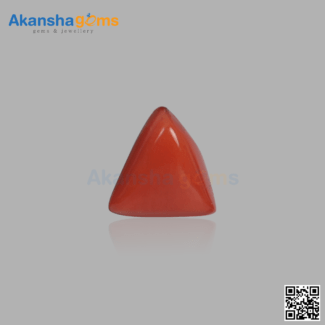Opal stone, with its captivating play of colors and iridescent allure, has captivated imaginations and inspired awe throughout human history. More than just a gemstone, opal stone is a phenomenon of nature, a symbol of creativity, and a bearer of ancient legends. In this blog, we will embark on a journey to explore the many facets of opal stone, from its ancient origins to its place in modern jewelry and beyond. Together, we will uncover the secrets and superstitions that surround this unique gemstone.
The Ancient Origins of Opal Stone
The story of opal stone begins in the ancient world, where civilizations across the globe discovered and revered this mesmerizing stone. One of the earliest recorded encounters with opal stone can be traced back to ancient Rome. The Romans, fascinated by the stone’s otherworldly beauty, sourced opals from the far reaches of the East, captivated by their unique ability to refract and reflect light.
In ancient India, opal held a deep spiritual significance. The Indians celebrated opal as the “Goddess of the Rainbow,” a name inspired by the stone’s vibrant and kaleidoscopic colors that mirrored the multi-hued grandeur of a rainbow. This metaphorical narrative showcases the ancient appreciation for the stone’s unique ability to capture and reflect the entire color spectrum.
The ancient Greeks also had a special connection with opal stone. They named the gemstone “Opallios,” derived from the Greek word “opallos,” meaning “to see a change.” This name perfectly describes Opal’s distinctive characteristic of displaying a spectrum of colors, each stone a unique dance of light and color.
Opal Stone Through the Ages
Throughout history, opal stone has adorned royalty, captivated artists, and inspired legends. One of the most famous opal stone in history was known as “The Orphanus.” This opal stone said to be as white as snow with splashes of bright red, was set in the crown of the Holy Roman Emperor in the 13th century. Its name, derived from the belief that there was no other stone like it, emphasized the rarity and uniqueness of opal.
Opal stones also found favor with Queen Elizabeth I, who, in 1584, received an opal parure (a full set of matching jewelry) from one of her favorite courtiers, Sir Christopher Hatton. This gift, a true testament to the beauty and value of opal, delighted the Queen.
The Many Colors of Opal Stone

One of opal’s most captivating characteristics is its remarkable display of colors. Unlike many other gemstones, opal is not defined by a single hue but rather by a spectrum of colors that dance and shimmer within the stone. This play of color, known as opalescence, is caused by the diffraction of light through the tiny silica spheres that make up the opal’s structure.
The colors of opal stone can range from milky white and delicate pink to vibrant orange, deep indigo, and dazzling green. Each opal is unique, with its own distinct pattern and combination of colors. This diversity of colors has contributed to opal’s symbolism as a stone of creativity and inspiration.
Opal Stone in Jewelry
Opal stone is highly prized in the world of jewelry and is renowned for its captivating beauty and unique characteristics. Opal jewelry has adorned royalty and elites throughout history, and it continues to be sought after in the modern era.
The use of opal in jewelry showcases the stone’s versatility. Opal can be cut and polished into a variety of shapes, from cabochons and free-form shapes to elegant faceted designs. Opal jewelry comes in a range of styles, from classic and timeless pieces to contemporary and avant-garde designs.
The value of opal jewelry varies widely, depending on the quality and rarity of the opal, as well as the craftsmanship involved in creating the piece. Fine opal jewelry, featuring rare and valuable opals, can command high prices and is often sought after by collectors and investors.
The Healing Powers of Opal Stone
In addition to its aesthetic appeal, opal stone has long been associated with healing and spiritual properties. In the realm of crystal healing, opal is believed to be a stone of emotional healing and balance. It is said to enhance emotional clarity and promote a sense of calm and peace.
Opal is also thought to be a stone of inspiration and creativity. Its vibrant colors and unique patterns are believed to stimulate the imagination, making it an ideal stone for artists, writers, and anyone seeking to tap into their creative potential.
Additionally, opal is associated with the crown chakra, located at the top of the head. By balancing and activating this chakra, opal is believed to enhance spiritual awareness and connection to the divine.
Superstitions and Legends Surrounding Opal Stone
Throughout history, opal stone has been shrouded in superstition and legend. While it was once revered and cherished, a shift in perception occurred during the Middle Ages, and opal became associated with bad luck and misfortune.
One of the most enduring legends surrounding opal is the belief that it brings bad luck to the wearer if it is not their birthstone. This superstition may have arisen from the stone’s unpredictable nature, with its ever-changing display of colors symbolizing the unpredictability of life.
Another legend states that opal stones contain within them the tears of angels or fallen stars, adding to their otherworldly allure. These stories showcase the deep connection between opal and the celestial realm, further emphasizing its mystical qualities.
Opal Stone in Modern Times
Today, opal stone continues to captivate and inspire, finding new expressions in modern culture. Opal is increasingly sought after in jewelry, with contemporary designers embracing the stone’s unique beauty and incorporating it into innovative designs.
The use of opal extends beyond jewelry as well. Opal art, featuring intricate carvings and inlay work, has gained popularity, showcasing the stone’s beauty in a different light. Opal is also valued in the world of mineral collecting, with rare and exceptional specimens commanding high prices at auctions and among private collectors.
The Many Varieties of Opal Stone
Within the world of opal, there exists a diverse range of varieties, each with its own distinct characteristics. Here are some of the most notable types of opal:
- Precious Opal: This variety displays a vibrant play of color, with a broad range of hues. It is the most valuable and sought-after type of opal.
- Common Opal: Common opal exhibits a subdued play of color or may lack a play of color altogether. It is less valuable than precious opal but is still used in jewelry and decorative items.
- Black Opal: Black opal, despite its name, is not truly black. It features a dark body tone, ranging from dark gray to blue-black, with vibrant flashes of color. Black opal is highly prized and considered one of the most valuable types of opal.
- White Opal: White opal displays a light body tone, ranging from milky white to cream, with vibrant colors. It is the most common type of opal found in Australia, the world’s largest producer of opal.
- Fire Opal: Fire opal, as the name suggests, exhibits a vibrant orange or red color, resembling the hues of flame. It is a highly sought-after variety, especially valued in Mexico, where it is the national gemstone.
- Boulder Opal: Boulder opal forms within ironstone boulders, with the colorful opal veins filling cavities in the rock. It exhibits a unique pattern and is often cut and polished with the host rock intact, creating a distinctive look.
- Crystal Opal: Crystal opal is known for its transparency and brilliant play of color. It is valued for its clarity, with the colors appearing to float within the stone.
Caring for Your Opal Stone
Opal stone, though beautiful, requires careful handling and care. Opals are relatively soft and porous, making them susceptible to scratching, chipping, and cracking if not handled properly. Here are some tips to ensure your opal stone jewelry stays in pristine condition:
- Store your opal jewelry separately from other items to avoid scratching. A soft pouch or a compartmentalized jewelry box is ideal.
- Avoid exposing opal jewelry to harsh chemicals, cosmetics, or household cleaners, as they can damage the stone’s surface.
- Remove opal jewelry before engaging in activities that may cause impact or abrasion, such as sports or heavy work.
- To clean opal jewelry, use a soft, slightly damp cloth to gently wipe the stone. Avoid using ultrasonic cleaners or steamers, as the heat and vibrations can damage the stone.
- Regularly inspect your opal jewelry for any signs of damage or loosening of settings. Have a professional jeweler address any issues promptly.
The Future of Opal Stone
As we look ahead, the future of opal stone is bright and filled with potential. With increasing awareness and appreciation for this unique gemstone, opal is poised to continue captivating and inspiring new generations.
In the world of jewelry, opal is finding new expressions through innovative designs and techniques. Contemporary jewelry designers are experimenting with opal in unexpected ways, combining it with unconventional materials, and exploring new settings and styles.
Beyond jewelry, opal is also finding applications in other luxury items, such as watch dials, decorative art, and high-end home décor. The stone’s mesmerizing play of color and unique character make it a sought-after element in luxury design.
Conclusion
Opal stone, with its ancient origins and enduring allure, continues to captivate and inspire. From its early beginnings in ancient civilizations to its place in modern culture, opal has played a significant role in human history. More than just a gemstone, opal stone symbolizes creativity, inspiration, and the boundless potential of the human imagination.
As we uncover the mysteries and legends surrounding opal, we are reminded of the deep connection between humans and the natural world and the power of gemstones to spark wonder and awe. With its unique beauty and intriguing characteristics, opal stone will undoubtedly continue to fascinate and enchant for generations to come.
FAQs
What makes opal stones unique? Opal stone are unique due to their play-of-color, an optical phenomenon where the stone displays a spectrum of colors that change with the angle of light.
How can you tell if an opal is real? Real opals exhibit a natural play of color and may have slight imperfections. Lab-created opals tend to have a uniform pattern and lack the depth of natural opals.
Are opal stones expensive? The value of an opal depends on factors like its type, play-of-color, size, and overall quality. While some opals can be very affordable, high-quality black or fire opals can be quite expensive.
What are the best ways to clean opal jewelry? Clean opal jewelry with a soft, damp cloth. Avoid using harsh chemicals or ultrasonic cleaners, as they can damage the stone.
Can opals be worn every day? Due to their relative softness, opals should be worn with care to avoid scratches and damage. It’s best to reserve opal jewelry for special occasions or take extra precautions if wearing it daily.


















